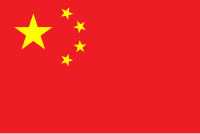
Photo from wikipedia
We conducted three pairs of 21‐year (1980–2000) experiments using the Weather Research and Forecast (WRF) model. The paired two experiment members were identical, except for the underlying land use/cover data,… Click to show full abstract
We conducted three pairs of 21‐year (1980–2000) experiments using the Weather Research and Forecast (WRF) model. The paired two experiment members were identical, except for the underlying land use/cover data, which were from the early 1980s and 2000 (hereafter, EXP1980 and EXP2000), respectivley. The differences in EXP1980 and EXP2000 were primarily induced by the land use/cover change (LUCC) from the early 1980s to 2000. To minimize the effects of WRF model uncertainties, the ensemble mean of three couples was applied. We found that the modifications of LUCC on summer precipitation over eastern China exhibited inter‐annual variability rather than kept fixed through 1980 to 2000. Due to the LUCC, the precipitation in eastern China may be decreased in 1981, 1984, 1986, 1988, 1989, and 1998 (hereafter, LR years) while increased in 1983, 1985, 1993, 1994, 1995, and 1999 (hereafter, MR years). Due to large discrepancy of large‐scale circulation background between MR years and LR years, there are different modifications by the LUCC on surface energy budget and therefore also on temperature, air pressure, water vapour supply and, eventually, precipitation. In the MR years, the LUCC induced increased evapotranspiration (i.e., latent heat) and decreased sensible heat over the middle and north partitions of eastern China; hence, there was a cooling effect. This cooling effect led to a decline in surface air pressure, thereby intensifying the ocean‐land pressure gradient; as a result, ocean‐to‐land movement of water vapour increased. Eventually, this led to increased precipitation. In the LR years, the LUCC induced significantly more sensible heat and slightly more latent heat over the north partition of eastern China, resulting in a warming effect. Then, the modifications to the surface air pressure and ocean‐land pressure gradient, as well as the water vapour flux, were reversed to those of the MR years, eventually leading to decreased precipitation.
Journal Title: International Journal of Climatology
Year Published: 2021
Link to full text (if available)
Share on Social Media: Sign Up to like & get
recommendations!